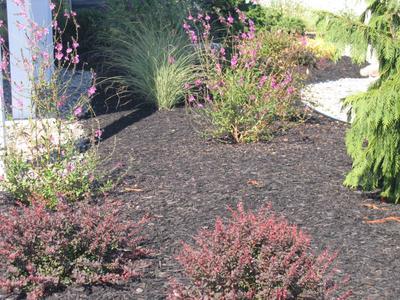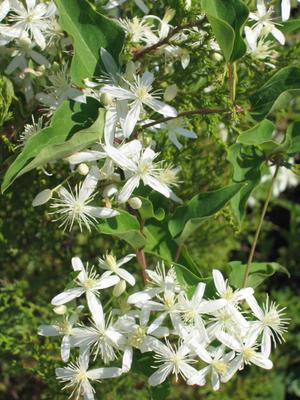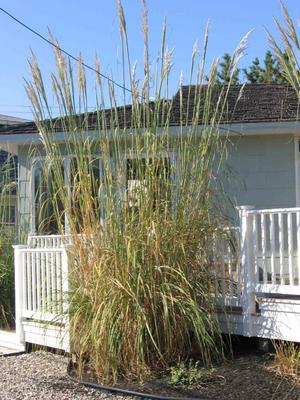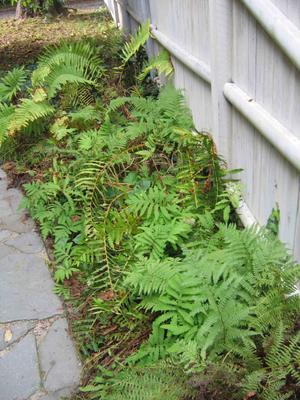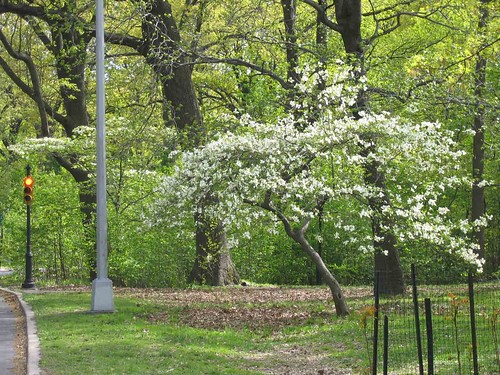
In another installment Home Grown Greenery we take a look at witch hazel (Hamamelis virginiana). Witch-hazel has a number of traits that help it steal the limelight, including smooth grey bark, attractive architecture, and colorful fall foliage. But the real show stopper comes when you least expect it. As November approaches and most respectable plants have dropped their leaves and gone to seed, Hamamelis virginiana bursts forth in floristic splendor. Clusters of small pale yellow blooms, each with four streamer-like petals, hug the twigs. Some flowers may linger on the branches into December.
In the wild, Hamamelis virginiana is a common shrub of North America’s eastern deciduous forest, making it an easy plant to get to know during a casual walk in the woods.
Slow growing and multistemmed, witch-hazel typically reaches heights of 15 to 20 feet. The shrub has a full, rounded crown and an attractive vase-shaped habit. Its bark—thin, smooth, and gray—is quite attractive and adds interest to the winter garden. In the shade of canopy trees, witch-hazel exhibits zigzag branching and may look as though it were roaming for light, which it is. Its branching pattern and its leaves—which are held perpendicular to the sun—make it a good competitor for the limited light found in the understory.
The leaves themselves are decorative. Broadly oval with scalloped edges and inverted V-shaped venation, they grow up to six inches long and mature from deep green to a rich golden color in fall. Scientists have speculated that the leaves are a food source for larvae of an endangered moth, Acronicta hamamelis. One definite leaf eater is the witch-hazel leaf gall (Hormaphis hamamelidis). To house its eggs, this aphid chews through the leaf underside and secretes chemicals that lead to the formation of Hershey kisses-shaped galls.

Each individual witch-hazel blossom is functionally monoecious, meaning that it’s equipped with both sets of reproductive organs but acts as either a male (producing pollen only) or female (producing fruit only). Thus, any chance of self-fertilization is eliminated. Instead, the flowers use their showy petals and faint fragrance to attract pollinators to facilitate cross-fertilization. Small gnats and bees are the main pollinators, and they are rewarded for their labors with sugary nectar and sticky pollen.
Researchers suspect that the plant’s unusually late flowering period induces insects to pay extra special attention to the unique blossoms—after all, the flowers are the only game in town.
After pollination, actual fertilization of the seed is delayed until spring. The fruit develops during the regular growing season and is newly ripened as flowers begin to open in late autumn. The fruits develop into hard, fuzzy, tan-colored capsules, under an inch long, and they carry one or two dark shiny seeds. In fall, the capsules burst and eject their seeds up to 25 feet away, but they persist on the branches for a while, resembling baby birds, beaks agape, expecting a worm. If left undisturbed on the forest floor, the seeds will germinate two years after dispersal. In the interim, they might be eaten by songbirds or small mammals, or even the occasional bear.
The ideal garden setting for witch hazel is part sun to light shade with moist, slightly acidic, organically rich soils. While best flowering occurs in full sun, planting witch-hazel out in the open will subject it to scorching and burning. Balled-and-burlaped or container-grown specimens can be transplanted in spring or fall. As a landscaping element, individual plants are showy enough to stand on their own, but witch-hazel also works well when multiple specimens are grouped together.
More on Hamamelis virginiana





